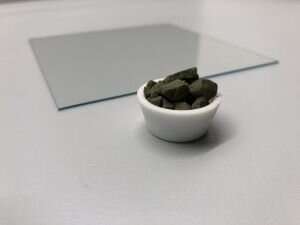Highly efficient solar cells thanks to solid foundation

The sun is an inexhaustible and sustainable source of energy. Hence, photovoltaics is gaining importance in German energy production. Among promising materials for solar cells—with a high efficiency and low production costs—are metal-organic Perovskites. Researchers of Karlsruhe Institute of Technology (KIT) have developed a novel type of highly efficient nickel oxide hole transport layer that can be deposited on large areas and reaches record efficiencies in these solar cells.
With efficiencies above 24 percent in the laboratory, Perovskite solar cells are among the most efficient thin-film photovoltaics systems. Compared to silicon solar cells that presently are predominant on the market, they can be produced much easier and at reduced cost.
When sunlight hits the Perovskite absorber, electrons are detached from their bound state and subjected to excitation. At the same time, positively charged holes remain. "To gather energy from the solar cell, these electrons and holes have to be removed on different sides of the absorber. In Perovskite solar cells, this is done by selective charge carrier layers, i.e. membranes that allow either electrons or holes to pass," says Tobias Abzieher, doctoral researcher at the Light Technology Institute (LTI) of KIT. "Efficient Perovskite solar cells do not only require an optimized light-absorbing Perovskite layer, but also optimized charge carrier-selective layers."
Together with other scientists of KIT, Abzieher has developed a new type of highly efficient hole transport layer based on nickel oxide (NiOx) for Perovskite solar cells. This layer can be produced at low costs and contrary to conventional organic materials, it is less sensitive to temperatures of more than 70°C. "To deposit the material on the substrate, we use a vacuum process technology, electron beam evaporation. By means of evaporation, metal oxide is deposited on a substrate. Thanks to the small number of process parameters, we can produce large homogeneous layers of constant high quality," Abzieher says.
Record Efficiencies
The completely vacuum-processed Perovskite solar cells reach efficiencies of up to 16.1 percent and, hence, they are among the most efficient Perovskite solar cells produced by this method. Apart from vacuum deposition, the highly efficient substrate also is ideal for absorber deposition by inkjet printing, a printing method widely used. With this well-known method, scientists reached a world record: their inkjet printed absorber layers reached efficiencies of up to 18.5 percent. "Presently work focuses on the deposition by rotary coating. Here, efficiencies are above 24 percent. However, this technology cannot be transferred to large areas," Tobias Abzieher says.
"We concentrate on scalable production methods. Our goal is to transfer Perovskite photovoltaics from the laboratory to the factories," says Dr. Ulrich W. Paetzold, Head of the Advanced Optics and Materials for Next Generation Photovoltaics Group of KIT's Institute of Microstructure Technology (IMT) and Light Technology Institute (LTI).














